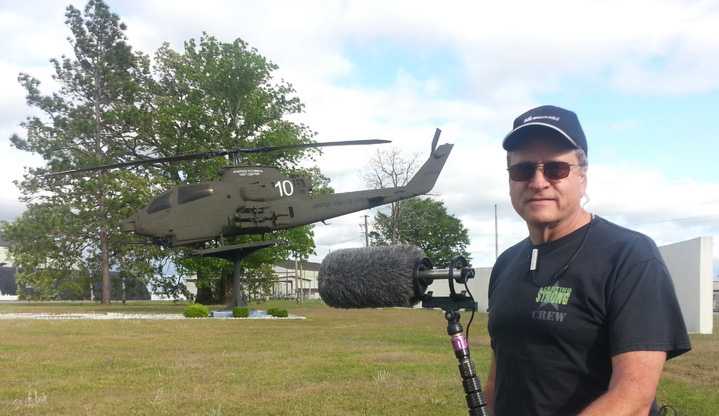Rob Smith flies high with Lectrosonics
- Details

Smith, whose credits include Preacher, Queen of the South, and Duck Dynasty, faced this task while filming Starting Strong. Produced by Ricky Schroeder’s Old Post Films beginning in 2014, the series looks behind the scenes at careers in the U.S. Army. To make his mission possible, he relied on Lectrosonics Digital Hybrid Wireless - specifically UCR411a receivers paired with SMV and SMQV transmitters and HMa plug-ons for booms, plus R1A receivers for producers’ and directors’ IFB monitoring.
“Cairns Army Airfield at Fort Rucker is where aspiring young pilots train to fly helicopters,” begins Smith. “They’ve earned a lot of credentials to get to this point, where they’re training in Bell Jet Rangers and Eurocopters. The job of me and my colleague Bob Tiwana - who originally supplied all the Lectrosonics gear - was to capture both all the radio communications between the helicopter crew and the tower, as well as chatter inside the copters between students and instructors.
“For one series of shots, we strapped into the back seat with our camera operator, with a minimum of 12 of the 411s between our two kits. These fed Sound Devices 788T recorders. Some SMV and SMQV transmitters were wired into the radio comms while others picked up Sanken COS-11 mics on the students’ persons. Obviously, we got everything with no problems.”
That was the easy part. “Here’s where it got interesting,” Smith foreshadows. “The aircraft the students are in, we call it the show copter. We still had a camera in its back seat, but we had to fly in formation with it in a separate copter as these pilots practiced touch-and-go landings and take-offs where they learn to avoid power lines and things of that nature. Because of course, we needed exterior footage of the manoeuvres, we needed to fly above it to get a shot looking down at the rotors, and so forth.
“On several occasions, we got well over 1,000ft away from the show copter and still got all the dialogue with no issues. The producers were on the ground listening to their R1a beltpacks, and they came up to me afterwards and said, ‘Wow, how were you doing that?’ They could hear everything like it was happening right next to them.”
Smith emphasises that this impressive reception was not due to powered antennas, a luxury he did not have. “Space was very tight inside our Blackhawk follow copter,” he explains. “There was absolutely no room to set up shark fins or anything like that. So, what makes it more unbelievable is that we were getting all this crystal-clear audio using just the whips on the 411s. With many different people talking all at once, we were easily able to isolate everyone for post-production.”
Yet another scene, this time with the sound department on the ground, presented even greater range demands. Smith reports his UCR411a receivers did not flinch. “After that, we still had the transmitters on the students and they had to fly a pattern around an airspace known as the practice box,” he says. “At times, I’ll bet they were two miles away from us. We had their audio. That was amazing.”
















